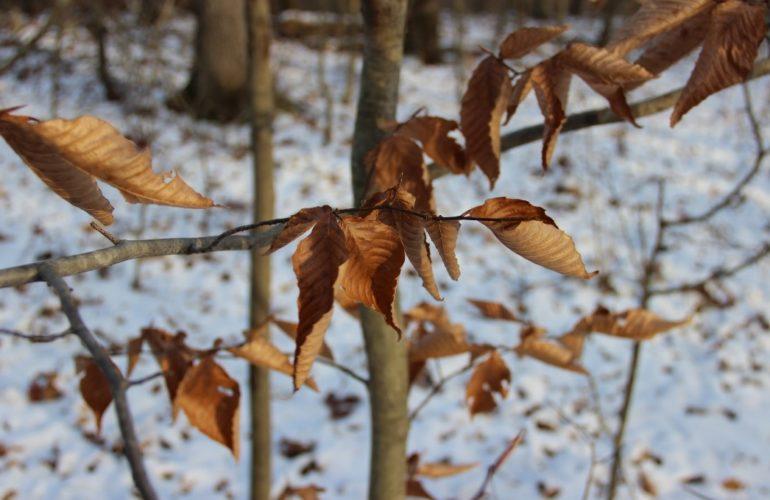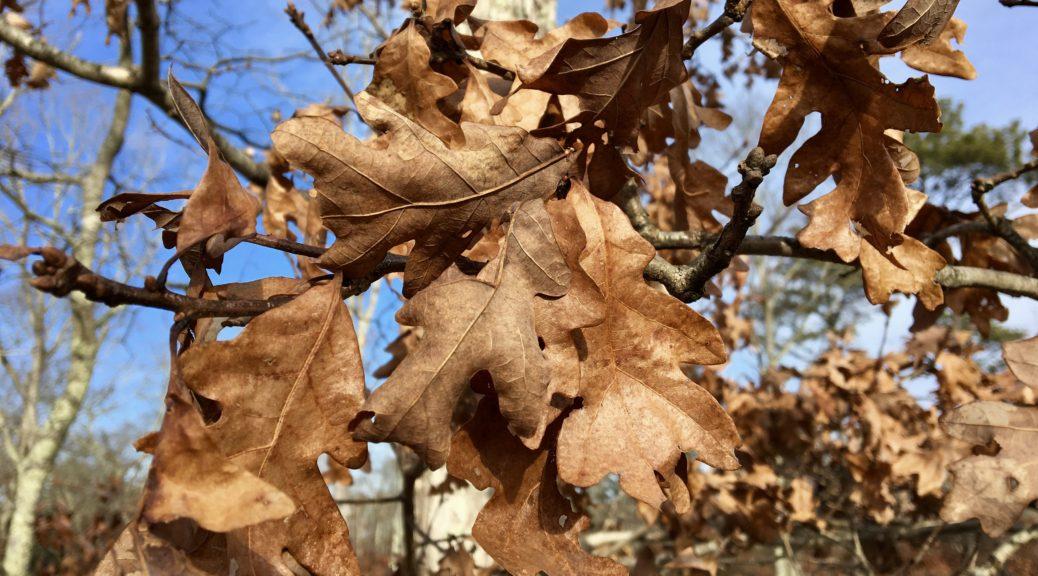
American beech tree in winter. Photo by Pennsylvania Parks & Forests Foundation.
As summer yields to fall, deciduous trees throughout the mid-Atlantic states lose their leaves in an often-spectacular display of color. However, not all hardwood trees participate in this pageantry, and decide to hang onto their leaves until spring. The brown and withered leaves may be difficult to spot among an otherwise dull and brown landscape, but when winter snows blanket the woodland, these surviving leaves are easier to spot.
Sometimes these are young trees. Other times, these are older, taller trees that have kept their leaves on lower limbs. These trees are practicing “marcescence” (pronounced “mar-CESS-enss”). The word comes from the Latin marcescere (“to fade”). In our area, this occurs on oaks, American beech, hornbeam, Eastern hophornbeam, and witchhazels. In most deciduous trees, leaf drop occurs in autumn when cells between the twig and the end of the leaf stem create an abscission layer. The cells separate from each other, leading to the leaf falling. But in marcescence, this doesn’t occur until spring.
While scientists have named the process, they are unsure why it exists.
Some theorize that marcescent leaves provide a fresh layer of mulch around the tree by adding nutrients for growth in the new year. This is particularly advantageous when the tree is growing on a dry, infertile site, which is where oaks and beeches are often found, out-competing other species. Another thought is that these leaves will help conserve soil moisture in the spring by adding shade to the forest floor.

Additional hypotheses hold that marcescence is tied to wildlife. The dried leaves will provide a certain amount of shelter from winter winds for birds. It may also be that the process is a defense mechanism against browsers such as deer. Scientists speculate that the tree limbs retain the dry and definitely un-tasty leaves to discourage browsing. Deer prefer to feed on more tender and nutritious buds and twigs. The conjecture is that these dried leaves may make it difficult for browsers to nip the new buds, or that they simply hide the new growth.
Regardless of the reason that marcescence exists, it provides an interesting contrast in a woodland in a snowy landscape or against a bright blue winter sky. But when new growth begins with the spring, the expanding buds will push the old leaves off and the branches will soon be covered in new greenery.
Branching Out, Vol. 30, no. 1 (Winter 2022)
Branching Out is the free, quarterly newsletter of the Woodland Stewardship Education program. For more than 25 years, Branching Out has kept Maryland woodland owners and managers informed about ways to develop and enhance their natural areas, how to identify and control invasive plants and insects, and about news and regional online and in-person events.